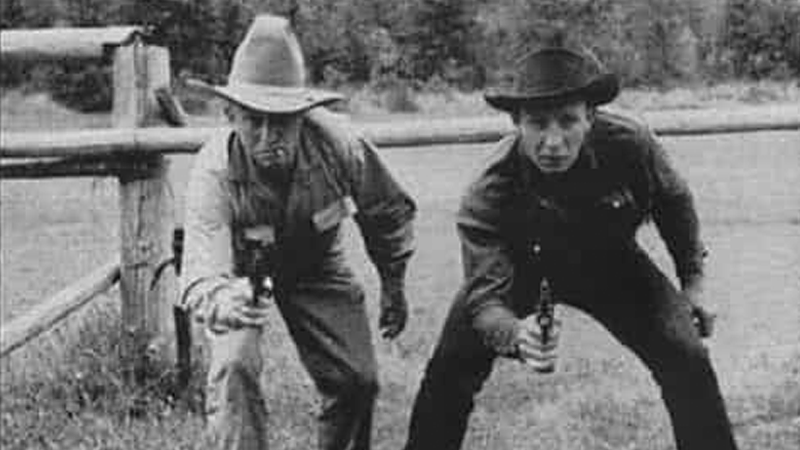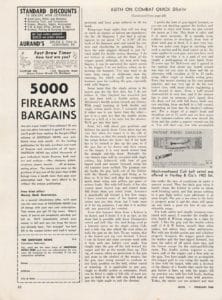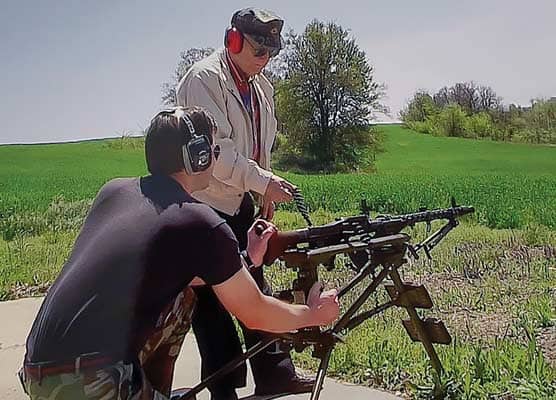The Combat Quick Draw
Classic Lessons from Elmer Keith
From the February 1960 issue of GUNS Magazine, here is “the word” on combat quick draw, spoken out of a lifetime of experience as a hunter, guide and law officer by none other than Elmer Keith.
Editor's Note
It is high time, we think, that somebody made clear the fact that there are at least two distinct and different kinds of quick draw: quick draw for combat. and quick draw for sport or competition. (Perhaps there should be a third category, for actors, whose sole purpose is to poke the muzzle of a gun into a cloud of black smoke. This is a legitimate purpose, and a real skill; but it is entirely lacking in the requirement for accuracy which is a part of both the other categories.) This magazine supports quick draw for sport and competition, but is strongly opposed to the use, in that category, of anything more lethal than wax bullets. Combat quick draw, properly done, is also relatively safe; but because it necessi. tates familiarization with full combat loads, it involves a potential risk which we do not think should be associated with quick draw as a sport. Elmer Keith is speaking here of combat quick draw, of which he is a master.
With the movies and television depicting incredible feats of quick draw and sixgun accuracy, the novice is apt to come up with a very wrong opinion on what is actually possible. The present amazing, nationwide growth of quick draw as a sport has produced some marvelous time records, firing wax bullets or sinlply bust· ing caps. This also creates a wrong impression of what is possible under actual gun fighting conditions.
The novice watching the movies would also gain the impression that nothing but a single action gun was ever used for quick draw gun fighting, and that all gun fights with sixguns were at close range. Neither is true. Double action revolvers are just as good as single actions, and in some ways better; and a finished sixgun shot can make a good revolver highly effective at 100 yards or more. Quick draw is but one phase of sixgun shooting, and combat quick draw is a post-graduate course for the expert sixgun shot who is interested in military combat or law enforcement. It should never be attempted until the pupil is, first, an expert marksman in slow fire at both short and long range. When you can score 90 on the standard American slow fire target, or kill jack rabbits or grouse with certainty up to 50 yards with a sixgun, or hit the silhouette of a man’s head and shoulders most of the time at 300 yards from rest or two-hand position, then you are ready to take up combat quick draw work. Only then will you know the full possibilities of a sixgun, and only then will you be sufficiently habit-fixed in safe gun handling for this post-graduate course. By then, too, you will realize how very seldom you will need to draw fast.
To continue reading, scroll to Page 22 in the digital version of the full GUNS Magazine February 1960 issue.











